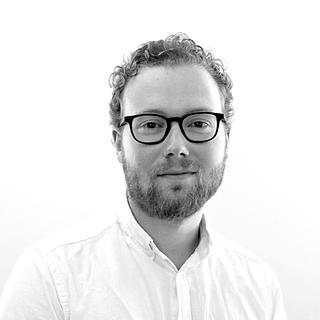KooZA/rch PUBLICATION
- de Boisséson
- 1 août 2016
- 3 min de lecture
INTERVIEW
.Who influences you graphically?
My influences are rather eclectic from the paint to the work of agencies of architecture including the illustration.
First of all my influences result from several painters which stood out the art history such as precursory William Turner of the impressionism, the naïve art and the luxuriant natures of Douanier Rousseau, the lively colors of the Fauvists André Derain and Henri Matisse or still David Hockney and Edward Hopper for the atmospheres which get free of their paintings. I also observe certain taste for the psychedelic affichisme of the 60s, and the Mouse Studios the artists of which they were even influenced by the Indian art and the Art nouveau, in particular Alphonse Mucha.
The illustration is also a world which inspires me especially the work of young graphic designers as RyoTakemasa, Cruschiform studio or still Tom Haugomat. Beyond these universes marked by the color, I am rather sensitive to modes of representation more minimalist as those of the Italian magazine San Rocco. The agencies of architectures also offer an important source of inspiration. I think about Dogma, Fala atelier, Office KGDVS, Viar estudio, 2A+P/A, NP2F and many others.
.What dictates your colour palette?
First of all I use the principle of association of complementary colors with most of the time a dominant of hot tones. It is colors which quickly bring a solar and attractive atmosphere to the project. At the same time variations of tints are the association of various factors. Actually colors are in the service of a particular atmosphere for every project, thus I try to draw from the physical and cultural context, the characteristics which will make the visual identity of the project. I try hard before every project to imagine its atmosphere and its color, it is a real tool of reflection beyond the illustrative aspect.
.To what extent did the context of Copenhagen influence how you represent your proposal graphically?
The Danish tradition of the hygge, which means something as “well-being” was a founding element in the exercise of representation of this library. Days are short and the plentiful snow in Copenhagen, conferring on the city its character, between shade and light. In this context the nature of the hygge and the library takes all its sense, in a place of refuge playing with a climate of inhospitable one sweetness. In the evening the building adorns itself with an incandescent dress, a light in the city just like a lighthouse which watches on over the harbourg. On the other hand the very present Scandinavian design and movable culture in Copenhagen also influenced strongly this graphics.
.Your images vary from monochromatic to colour, what is the effect and purpose of this?
Where the color stimulates the eye and the offer of the dynamics in the image, the black and white has the advantage to concentrate the look on what is essential to the project. The drawing seems more uncluttered and corresponds to a will to highlight the timeless aspect of the situation. It brings a photographic side to see film, which gives to the project a quite particular atmosphere. The choice between color or black and white depends on the message that the image has to make pass.
.What is the effect of adding texture to the image compared to the classic photoshop paint bucket? How does this change the way the viewer perceives the space?
The texture gives depth to colors, and brings them a more pictorial aspect, without that the frontality of colors is too present. Textures also allow to give some depth of field and to unify all the tints. The texture participates in the atmosphere and in the writing of the image sometimes by translating weather conditions as snow or rain.The relay of textures is also essential sometimes to evoke the materialities of the architecture. For all that textures have rather vocation, in a shape of abstraction to be evoked and to make work the imagination of the spectator rather than to congeal the image in a too faithful representation



Commentaires